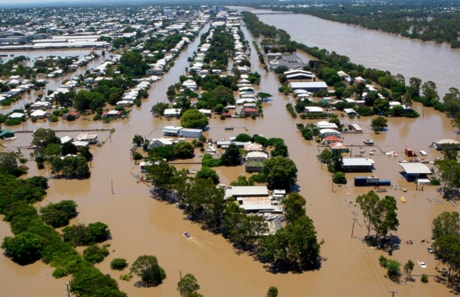SYDNEY, Australia — Australia put an army general in charge of flood recovery Wednesday after weeks of heavy rains deluged the country’s coal-producing northeast, crippling the area’s economy and sending out reverberations felt in coal markets around the world.
Floodwaters have forced most of Queensland state’s coal mines to shut and some may not restart production for months, ministers said at an emergency Cabinet meeting in Brisbane, the state capital.
After the meeting, Queensland Premier Anna Bligh announced that Maj. Gen. Mick Slater would lead the recovery effort of floods that have affected 200,000 people and are estimated to cost billions of dollars.
“This is a disaster of an unprecedented scale and it will require an unparalleled rebuilding effort,” Bligh told reporters.
But until the waters dry up, it won’t be clear what the cost of the flooding will be, Bligh warned.
“If you count everything from the cost to homes, the home rebuilding effort, public infrastructure rebuilding effort and economic loss, I think we’re well above $5 billion territory,” she said.
Queensland is a centre of Australia’s coal mining industry and 40 mines have been shut because of the flooding. Some coal companies have begun to downgrade profit projections as a result.
“It’s going to take some months for some mines to be back to full operation,” Resources Minister Stephen Robertson said. “We earn ’round about AU$100 million ($100 million) a day exporting coal to the rest of the world and exports have been significantly restricted by the impact on infrastructure.”
Wall Street analysts said the flooding would push coal prices higher, tightening supplies at a time when the global economy is gaining steam. Dahlman Rose & Co. said that, combined with weather-related supply disruptions in Colombia and Europe, the flooding was increasing prices around the world.
“Recent weather events have combined to drive international thermal coal prices well past 2010 highs to levels not seen since October 2008,” Dahlman Rose analyst Daniel Scott said in a research note.
The deluge has also ruined crops and caused “catastrophic” damage to Queensland’s transport systems, Bligh told Australian Broadcasting Corp. radio.
More than a week of pounding rains that started just before Christmas left much of northeastern Australia under a sea of water that is making its way through river systems toward the ocean.
Around 1,200 homes in Queensland have been inundated, with another 10,700 suffering some damage. Four thousand residents evacuated from their homes in the flood zone, which spans an area greater than France and Germany combined.
The coastal city of Rockhampton has been particularly hit and exhausted residents were warned Wednesday they would face a long wait before the churning, muddy mess dries up.
But there was hope the waters had swelled to their highest level. Water from the overflowing Fitzroy River has already swamped 200 homes and 100 businesses, while flooding elsewhere in northeastern Australia has forced thousands to evacuate.
“It looks like it may have stabilized,” Mayor Brad Carter said.
In the city of 75,000, about 500 residents were evacuated this week. Even if the waters levels hold, residents face a long wait before things return to normal, officials warned.
“These water levels will be consistently high for a long period of time and these levels could stay for 24 hours before they start to drop,” Queensland police Acting Assistant Commissioner Alistair Dawson said.
In other parts of the state, some flooded communities were beginning to dry out. In the town of Theodore, which evacuated all 300 residents last week, specialists arrived in helicopters on Wednesday to check the safety of power, water and sewage plants, county Mayor John Hooper said.
Officials were still trying to determine when it would be safe to allow residents to return. One problem: an influx of venomous snakes, flushed from their habitats and searching for dry ground amid the waters.
Rockhampton residents have also reported seeing higher than usual numbers of snakes, Carter said. Saltwater crocodiles were another worry for people entering floodwaters, as the predators have been spotted from time to time in the Fitzroy, he said.
“There’s a lot of snakes — and I mean a lot,” Rockhampton resident Shane Muirhead told Australian Broadcasting Corp. “Like, every hundred yards (meters) you will see a snake, and they’re just everywhere.”
In the southern Queensland town of St George, nursing home residents evacuated and residents toiled in the rain to build levee banks ahead of floodwaters expected to peak next week. The town was devastated in March by another flood, and residents were worried the latest onslaught of water would cause even more damage.
“People see the floodwaters coming down and say, ’That’s my life about to be covered in silt again,”’ Senator Barnaby Joyce, a St George resident, told Australia’s Sky News. “People are thinking ... we’ve got no money, no crop, we’ve really got no future.”
